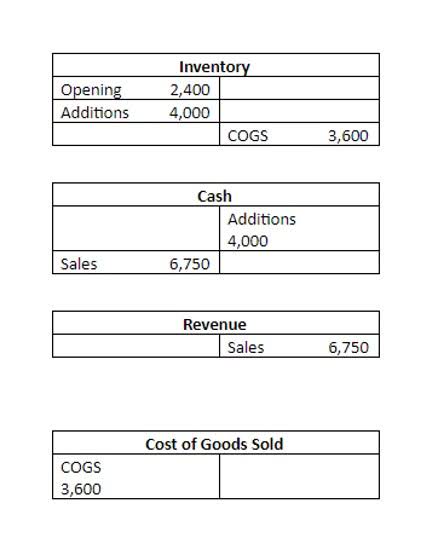
The net cash flows generated from investing activities were $46.6 billion for the period ending June 29, 2019. balance sheet Overall Apple had a positive cash flow from investing activity despite spending nearly $8 billion on new property, plant, and equipment. The net cash flows generated from investing activities were $3.71 billion for the twelve months ending Sept. 30, 2023. Overall, Apple had a positive cash flow from investing activity despite spending nearly $30 billion on the purchase of marketable securities.
Slavery Statement

This statement is one of three key financial statements—the other two are the income statement and the balance sheet. CFF follows the movement of cash from a company to its investors and creditors, detailing a company’s financial structure. It’s different from cash from operating activities, which is cash from a company’s core business operations, and cash from investing activities, which is cash from the purchase and sale of assets. This section of the cash flow statement shows how cash flows from a company’s core business operations, and whether the company can sustain itself without external financing.
7 Classification of cash flows

While this signals a negative cash flow from investing activities in the short term, it may help the company generate cash flow in the long term. Generally speaking, companies acquire many of their fixed assets using credit rather than cash, as these assets tend to be among the more expensive. A few examples of fixed asset purchases would include a company acquiring another business, a new fleet of vehicles, or even the land on which future properties might be built. When a medium other than cash is https://www.bookstime.com/articles/ap-automation-for-manufacturing-companies used to acquire an asset, we call it a non-cash investing activity. When we prepare a statement of cash flows, we are concerned only with cash transactions. The significant non-cash investing activities are, however, disclosed in the footnotes under the caption “non-cash investing and financing activities”.

Financial Close Solution
These activities primarily involve the acquisition and disposal of long-term assets such as property, plant, equipment, and investments in marketable securities. Investing activities refer to the purchase and sale of long-term assets and other investments that a company makes to generate future income. These activities are crucial for companies as they represent the capital expenditures that are expected to yield a return over time. Examples of investing activities include the acquisition of property, investing activities include plant, and equipment, as well as investments in securities or other businesses.
Any changes in the cash position of a company that involves assets, investments, or equipment would be listed under investing activities. Investing activities are a crucial aspect of financial management and analysis, often underpinning the long-term success of any business or individual. By understanding what constitutes investing activities, you can gain insight into how capital is allocated and how these actions can influence future revenue. This article delves into various examples of investing activities, emphasizes their significance, and explains their role in both personal and corporate finance. CFI includes a whole range of investing activities that involve the cash purchases and disposals (selling) of non-current assets. Investing activities represent a dynamic part of any small business’s accounting practices.
- As mentioned previously, you may also spend cash on purchases of marketable securities, such as stocks in other companies, which can earn you dividends and be easily converted to cash.
- It is always easier to understand when we create and answer some questions before we calculate cash flow from investing activities.
- Then you subtract the costs of purchasing non-current assets such as equipment or securities.
- The company also realized a positive inflow of $3 billion from the sale of investments.
- While preparing the statement of cash flows, the treatment of amortization of intangible assets is similar to the treatment of depreciation on fixed assets.
- It complements the balance sheet by explaining changes in cash balances and reconciling non-cash transactions from the income statement to reveal how much profit actually converts into cash.
Cash Flow From Financing Activities (CFF): Formula and Calculations
- Here’s a short list of common cash inflows and outflows listing in the investing section of the cash flows statement.
- Investing activities are a crucial component of a company’s cash flow statement, which reports the cash that’s earned and spent over a certain period of time.
- To find out, start by looking at your balance sheet – identify the non-current assets, and then analyse any differences in values over the two periods.
- As noted, a company may raise capital in the short term but have difficulty paying that off in the long term.
- Proceeds obtained from the disposal of fixed assets such as property, plant and equipment.
- High capex often indicates expansion, while frequent asset sales may indicate liquidity concerns.
- Sam founded his first startup back in 2010 and has since been building startups in the Content Marketing, SEO, eCommerce and SaaS verticals.
With this extra 30k, he decides to invest in marketable securities – specifically manufacturers of batteries and other components related to e-bike manufacturing. Non-current assets (long-term assets) are assets that are expected to deliver value and benefits in the long run (1+ years). They’re highly illiquid, meaning that they can’t be easily or rapidly converted to cash.
What is Included in Cash Flow from Investing Activities?
Stay ahead by delving into the latest insights on optimizing the CCC to enhance cash flow management. The following sections break down the most common kinds of investing activities for small businesses. While an investor can see that a company is raising capital or paying down debt, CFF doesn’t provide insight into why, whether the actions are positive or negative, and what the long-term effect could be. CFF can provide investors and analysts with insight into a company’s financing activities, but it also comes with many limitations. Investing activities are pivotal because they indicate how a company allocates its resources in pursuit of growth and expansion. They reflect the company’s commitment to future profitability and its approach to managing its asset base.
